GLASS-LINED CYLINDRICAL POCKET MICROSCOPES:
4ndQUARTER 19th C.
MODEL:
'MAGIC CAGE MICROSCOPE' (The Youth's Companion, 1879) or
'SEED MICROSCOPE WITH GLASS CAGE FOR LIVING INSECTS' (Beck, 1882) or
'MICROSCOPE FOR INSECTS ETC WITH GLASS CAGE' (Queen, 1890)
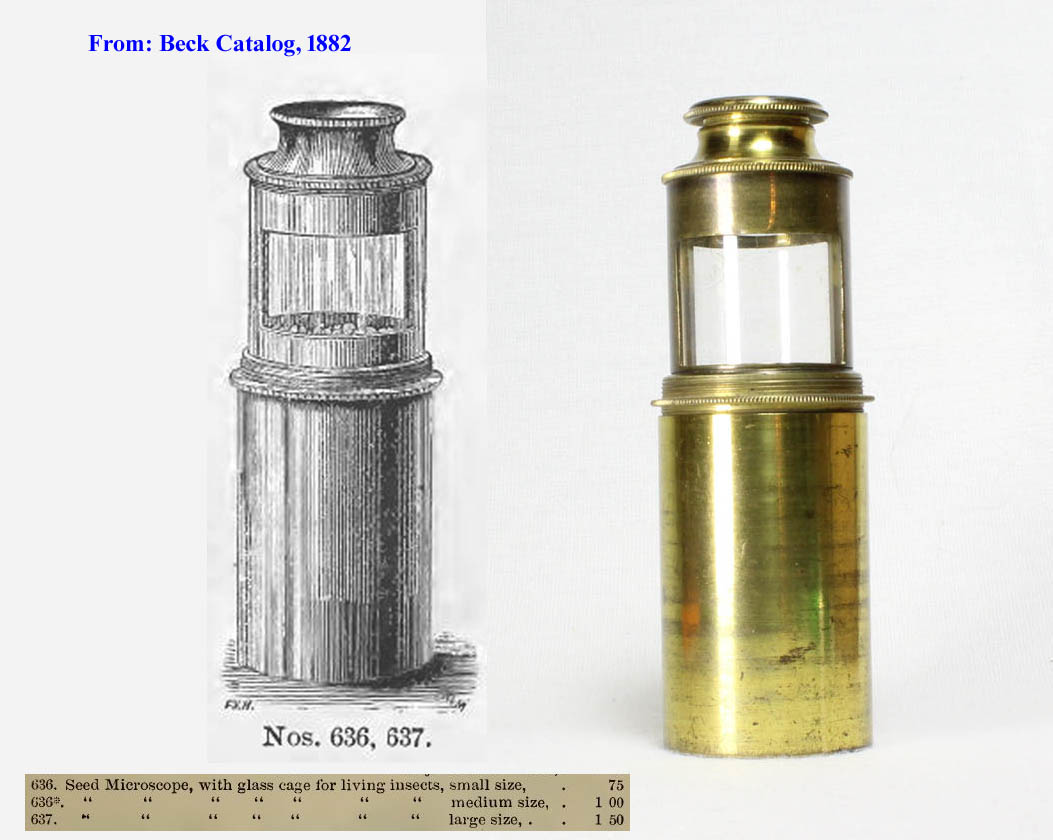
These microscopes were made in at least three sizes; two sizes are represented here.
The case of the larger one is 62 mm high with an outside case diameter of 40 mm. Minimum height of the instrument is 45 mm, barrel diameter 34 mm. This example has lost its glass. The instrument can screw to the top of its case which serves as a stand. For storage it stows upside down in that case and a cap then covers its bottom. This instrument has a push-pull focus. The eyepiece consists of two optical elements, one on the eye side,the other at the bottom of the eyepiece. This gives this eyepiece a power of about 20X.
The second instrument fits in a case of 29 mm diameter, It too stores in the case upside down, and while the glass is extant, the cap for the case is missing. As can be seen in the middle image, unscrewing the bottom reveals a round glass plate that presses against the bottom of the glass 'cage' so as to be usable as a compressor. Unlike the other example, instead of push-pull focus, this one has a screw focus. This instrument has a 25 mm diameter and is 43 mm high minimum. Unlike the other example, this one has a single optical element. This is a versatile instrument that works well. The eyepiece has a power of about 10X
HISTORY OF THIS MICROSCOPE
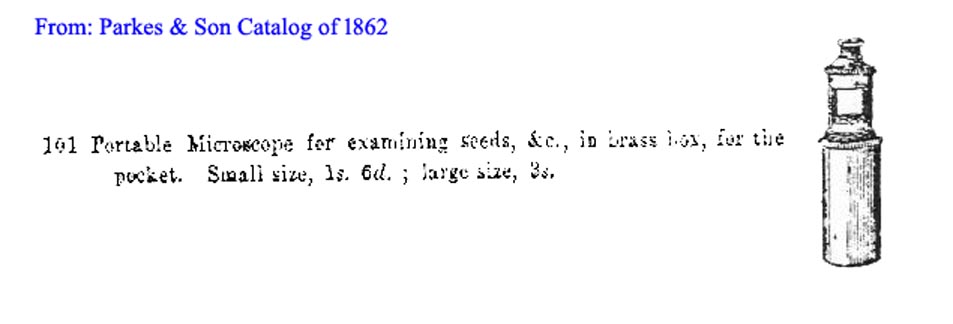 This type of instrument has often (incorrectly) been referred to as a 'Raspail' type. The instruments pictured here were apparently mainly sold in the last quarter of the nineteenth century, but also as early at the third quarter as shown in the illustration from Parkes & Sons Catalog from 1862. The Parkes and Beck illustrations, taken together illustrate these microscopes were made for many years. The superficial resemblance to the cylindrical Deleuil microscope described by Raspail in 1838 derives from the general shape, the fact that it has two brass uprights, and that the case it is stored in can be used as a support for the instrument. This is where the similarity ends however, as the Deleuil instrument described by Raspail had an adjustable stage inside and a choice of three different power eyepieces. The stage was raised or lowered on threads inside the barrel. Unlike the glass 'cage,' the microscope described by Raspail had an optional glass covering open at both ends that could be used to cover its outside, rather than contain the subject inside as in the instruments seen here. Unlike the Deleuil instrument, the instruments on this page were supplied with only a single low power eyepiece. I should mention actual examples of the cylinder microscope as described by Raspail and made by Deleuil, are not known to exist, at least at the time of this writing(2016).
This type of instrument has often (incorrectly) been referred to as a 'Raspail' type. The instruments pictured here were apparently mainly sold in the last quarter of the nineteenth century, but also as early at the third quarter as shown in the illustration from Parkes & Sons Catalog from 1862. The Parkes and Beck illustrations, taken together illustrate these microscopes were made for many years. The superficial resemblance to the cylindrical Deleuil microscope described by Raspail in 1838 derives from the general shape, the fact that it has two brass uprights, and that the case it is stored in can be used as a support for the instrument. This is where the similarity ends however, as the Deleuil instrument described by Raspail had an adjustable stage inside and a choice of three different power eyepieces. The stage was raised or lowered on threads inside the barrel. Unlike the glass 'cage,' the microscope described by Raspail had an optional glass covering open at both ends that could be used to cover its outside, rather than contain the subject inside as in the instruments seen here. Unlike the Deleuil instrument, the instruments on this page were supplied with only a single low power eyepiece. I should mention actual examples of the cylinder microscope as described by Raspail and made by Deleuil, are not known to exist, at least at the time of this writing(2016).

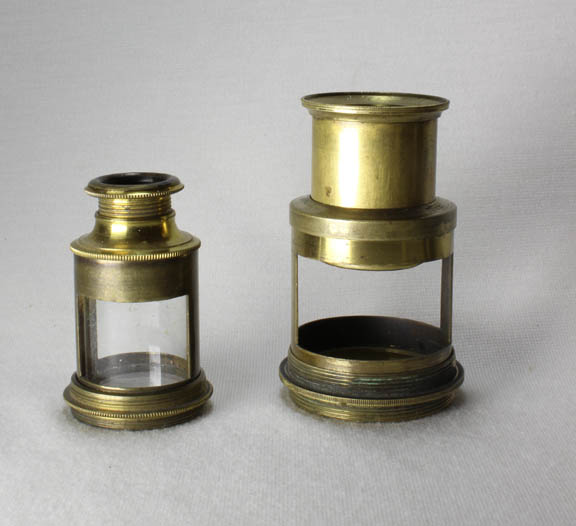
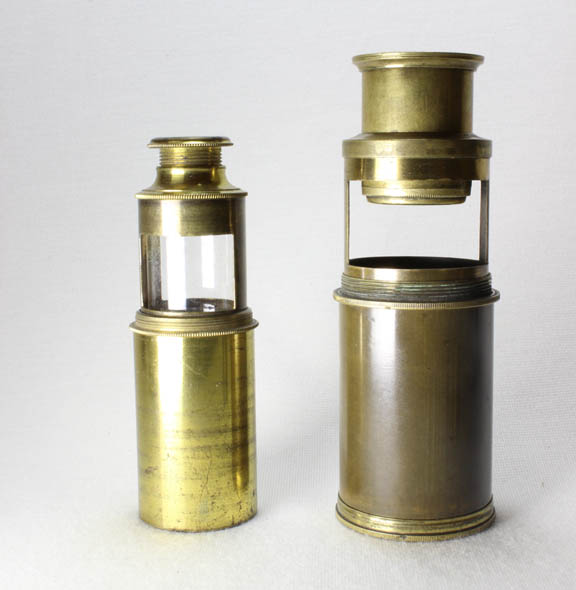
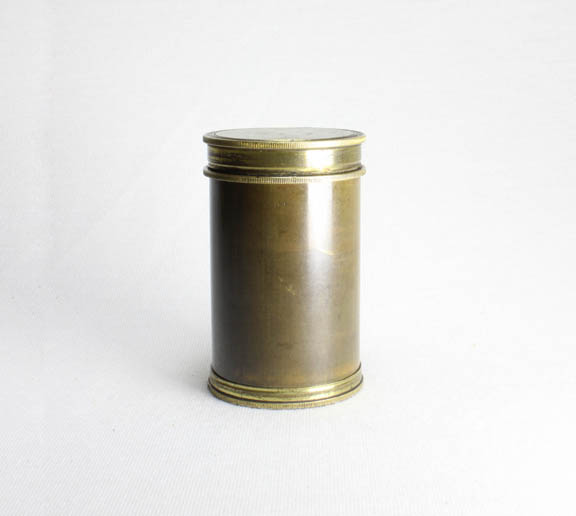
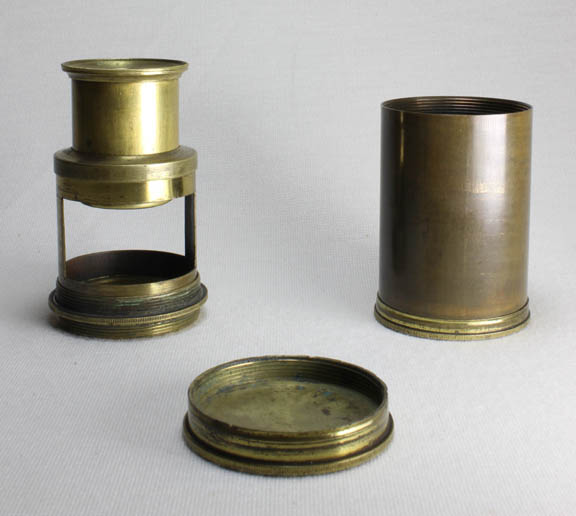
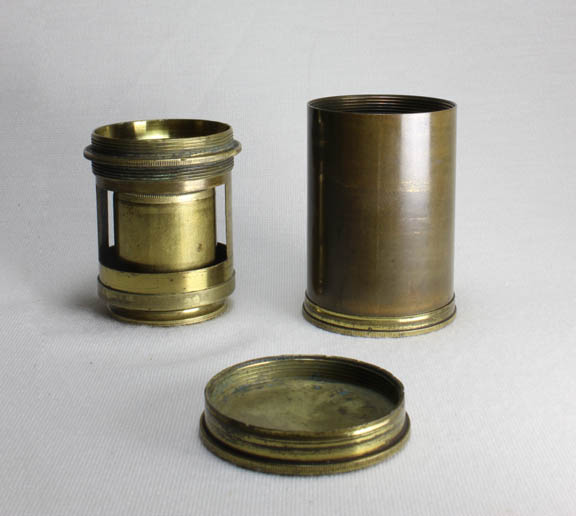
 This type of instrument has often (incorrectly) been referred to as a 'Raspail' type. The instruments pictured here were apparently mainly sold in the last quarter of the nineteenth century, but also as early at the third quarter as shown in the illustration from Parkes & Sons Catalog from 1862. The Parkes and Beck illustrations, taken together illustrate these microscopes were made for many years. The superficial resemblance to the cylindrical Deleuil microscope described by Raspail in 1838 derives from the general shape, the fact that it has two brass uprights, and that the case it is stored in can be used as a support for the instrument. This is where the similarity ends however, as the Deleuil instrument described by Raspail had an adjustable stage inside and a choice of three different power eyepieces. The stage was raised or lowered on threads inside the barrel. Unlike the glass 'cage,' the microscope described by Raspail had an optional glass covering open at both ends that could be used to cover its outside, rather than contain the subject inside as in the instruments seen here. Unlike the Deleuil instrument, the instruments on this page were supplied with only a single low power eyepiece. I should mention actual examples of the cylinder microscope as described by Raspail and made by Deleuil, are not known to exist, at least at the time of this writing(2016).
This type of instrument has often (incorrectly) been referred to as a 'Raspail' type. The instruments pictured here were apparently mainly sold in the last quarter of the nineteenth century, but also as early at the third quarter as shown in the illustration from Parkes & Sons Catalog from 1862. The Parkes and Beck illustrations, taken together illustrate these microscopes were made for many years. The superficial resemblance to the cylindrical Deleuil microscope described by Raspail in 1838 derives from the general shape, the fact that it has two brass uprights, and that the case it is stored in can be used as a support for the instrument. This is where the similarity ends however, as the Deleuil instrument described by Raspail had an adjustable stage inside and a choice of three different power eyepieces. The stage was raised or lowered on threads inside the barrel. Unlike the glass 'cage,' the microscope described by Raspail had an optional glass covering open at both ends that could be used to cover its outside, rather than contain the subject inside as in the instruments seen here. Unlike the Deleuil instrument, the instruments on this page were supplied with only a single low power eyepiece. I should mention actual examples of the cylinder microscope as described by Raspail and made by Deleuil, are not known to exist, at least at the time of this writing(2016).